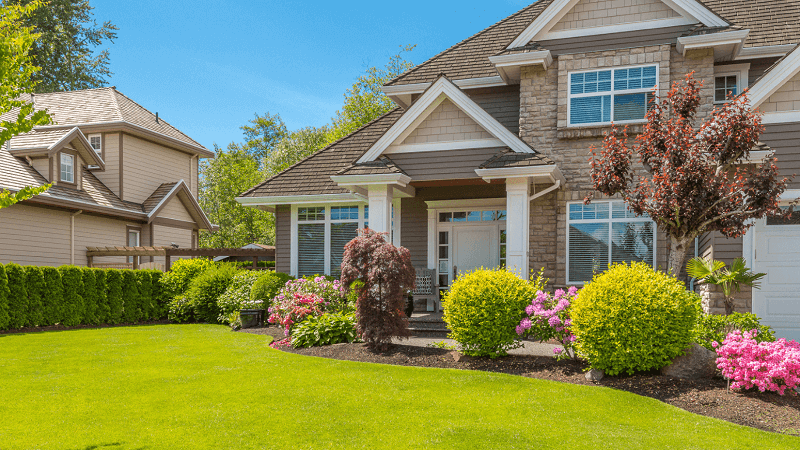When most homeowners think about increasing the value of their property, their minds often jump to kitchen upgrades, bathroom remodels, or even adding a new room. While these interior improvements can certainly boost resale value, one of the most overlooked and powerful ways to enhance your property’s worth lies just outside your front door: landscape design. A thoughtfully designed landscape does more than just beautify your yard; it plays a key role in improving curb appeal, promoting sustainability, and even impacting your mental well-being.
Unlike interior renovations that often require costly materials and invasive construction, landscape design allows for gradual, flexible changes that evolve over time. Whether it’s creating a welcoming front yard or designing a peaceful backyard retreat, the benefits stretch beyond aesthetics.
Studies show that homes with well-designed outdoor spaces tend to sell faster and at higher prices compared to properties with minimal or neglected landscaping. It’s not just about planting a few flowers. It’s about creating a cohesive, functional space that complements your home and lifestyle. Below, we’ll explore how landscape design adds measurable and intangible value to your property in multiple ways.
Enhancing First Impressions
First impressions matter, especially in real estate. When someone pulls up to your home, the landscaping is often the first thing they see. A well-maintained lawn, trimmed shrubs, and an organized layout give potential buyers or guests the sense that the property is well cared for overall.
Real estate agents frequently emphasize curb appeal because it sets the tone for how buyers perceive the rest of the property. If the outside is disheveled, many assume the interior will be too.
On the other hand, a tidy, attractive yard invites curiosity and positive expectations. Something as simple as a paved walkway bordered by native plants can give a sense of intention and warmth before someone even steps through the door.
Creating Usable Outdoor Living Spaces
One major advantage of landscape design is its ability to transform unused or awkward outdoor areas into functional living spaces. Think of patios, fire pits, garden seating, or even outdoor kitchens. These spaces extend your living area beyond the walls of your home, making your property feel larger and more versatile.
Usable outdoor spaces have become increasingly popular, especially after recent trends that pushed people to value their homes more deeply. Many buyers now look for homes that offer relaxation, entertainment, and privacy outside, not just inside. Investing in these areas through thoughtful design shows that your property can accommodate diverse lifestyles, making it more appealing to future buyers.
Improving Environmental Sustainability
Today’s homeowners and buyers are more environmentally conscious than ever. Sustainable landscaping not only helps the planet but also cuts down on maintenance costs in the long run. Choosing drought-tolerant plants, installing efficient irrigation systems, and using native species can drastically reduce water consumption.
Sustainable landscape design can also improve soil health and reduce the need for chemical fertilizers. By using composting techniques, permeable paving, and strategic shading, homeowners can naturally regulate temperatures and minimize stormwater runoff. All these elements create an eco-friendly property, which is increasingly becoming a selling point, especially in regions affected by drought or flooding.
Increasing Property Value
Landscape design directly influences the market value of a property. Numerous studies suggest that well-landscaped homes can see a 5 to 20 percent increase in value compared to homes with little or no landscaping. This increase isn’t just based on appearance. It’s rooted in utility, desirability, and perceived care.
Unlike interior renovations that may go out of style or require regular updates, good landscaping tends to age gracefully when well maintained. Mature trees, for example, offer not only shade but can add thousands to your property’s value by increasing privacy and lowering energy bills through natural cooling.
Reducing Energy Costs Through Strategic Planting
One underrated aspect of landscape design is its ability to impact a home’s energy efficiency. Trees and shrubs planted strategically can block wind in the winter and provide shade in the summer, reducing the need for excessive heating and cooling.
By positioning plants where they can act as windbreaks or shields from direct sun, you can help maintain indoor temperatures more naturally. Over time, this not only contributes to environmental sustainability but also saves you money on energy bills, which can be an appealing factor for future buyers.
Supporting Mental and Physical Well-Being
The value of landscape design isn’t just financial. It also contributes to personal well-being. Spending time in green spaces has been linked to reduced stress, improved focus, and better mood. A quiet garden corner, a hammock under a tree, or a path lined with calming foliage can offer everyday moments of peace that busy lives often lack.
Moreover, landscaped spaces can encourage more outdoor activity. Whether it’s gardening, hosting family barbecues, or simply taking a morning coffee outside, these habits promote physical movement and deeper connection with nature. When buyers or guests see these features, they don’t just see a yard. They envision a lifestyle.
Adapting to Regional Climate and Style
Good landscape design reflects the local environment and climate, helping a property feel like it truly belongs in its setting. For example, desert-friendly designs in the Southwest or rain garden systems in wetter regions show an understanding of how the land behaves.
In Southern California, where both aesthetics and water efficiency matter, homeowners often seek professionals familiar with local conditions. A design approach like the one used by San Diego ARC Design Landscape is a good example of adapting landscape elements to suit both climate and architectural style. These kinds of thoughtful adaptations can offer long-term rewards, especially in regions prone to environmental stress.
Attracting the Right Buyers
If you ever plan to sell your home, well-designed landscaping can help you attract the kind of buyers you want. Buyers looking for family-friendly homes may appreciate a yard with child-safe play areas. Others might be drawn to meditative gardens or minimalist stone layouts that require less upkeep.
In a competitive market, any feature that sets your property apart can make a big difference. While many homes may have similar interiors, landscaping offers the opportunity for creative expression. This uniqueness can leave a lasting impression on potential buyers and encourage higher offers.
Low Maintenance Doesn’t Mean Low Impact
A common misconception is that valuable landscaping has to be complex and high-maintenance. In reality, some of the most effective landscape designs are low-maintenance yet impactful. Gravel beds, mulch layers, and native grasses require minimal upkeep and still look elegant.
The key is to create a design that looks intentional. Clean lines, balanced color, and smart spacing make even the simplest yards appear more valuable. Hiring a professional designer or even studying basic principles of layout and plant placement can make a noticeable difference without turning your yard into a full-time job.
Conclusion: A Smart Investment with Lasting Returns
Landscape design is more than just gardening. It’s a strategic approach to making your outdoor space work for you. From boosting property value and reducing energy costs to improving mental health and creating inviting outdoor areas, the benefits of investing in landscaping are far-reaching. And unlike many indoor renovations, it’s an investment that grows, quite literally, over time.
As the housing market becomes more competitive and homeowners prioritize both beauty and function, a well-designed yard stands out as one of the smartest ways to add lasting value. Whether you’re staying put or planning to sell in the near future, giving thoughtful attention to your landscape design is a step worth taking.

